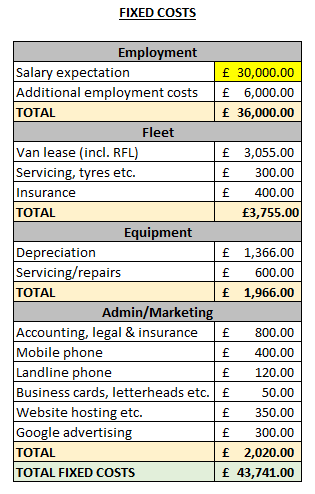Pricing lawn mowing services can be tricky. You want to be fair but profitable.
Many factors influence the right price. Understanding how to price lawn mowing services is crucial for success. You need to consider the size of the lawn, the time it takes to mow, and the equipment you use. Also, local market rates play a significant role.
Pricing too high may drive away customers, while pricing too low may undervalue your services. This blog will guide you through the best way to price lawn mowing. By following these tips, you can ensure your business stays competitive and profitable. Whether you’re new to the lawn care industry or looking to refine your pricing strategy, you’ll find valuable insights here.

Credit: www.getjobber.com
Introduction To Lawn Mowing Pricing
Pricing lawn mowing services can be tricky. Consider factors like yard size, frequency, and local rates. This ensures fair pricing for both you and your customers.
Importance Of Proper Pricing
Proper pricing for lawn mowing is very important. It helps attract customers. It also ensures fair payment for your work. Overpricing can turn away clients. Underpricing can hurt your profit. Finding the right balance is key. Research your local market. Understand what others charge. This helps you set a competitive price. Good pricing helps your business grow.
Common Pricing Strategies
Several strategies exist for lawn mowing pricing. Here are some common ones:
- Hourly Rates: Charge based on time spent.
- Flat Rates: Set a fixed price per job.
- Per Square Foot: Charge based on lawn size.
- Package Deals: Offer bundled services for a discount.
Choose the strategy that works best for you. Consider your costs and competition. This helps you stay profitable and competitive.
Market Research
Check what other lawn services in your area charge. Look at their prices and services. Compare their quality and customer reviews. Are they offering special deals? It helps to know how much they charge for basic mowing or extra services. This will give you an idea of how to price your own services.
Know who your customers are. Are they homeowners or business owners? Think about their income level and property size. This can affect how much they are willing to pay. Older people might need more frequent services. Families might need a play area mowed. Understanding your customers helps set the right price.
Cost Analysis
First, list all the tools and supplies needed. These include lawn mowers, gas, and maintenance. Add costs for any repairs or replacements. Track how much gas you use each week. Calculate the cost per mowing. Also, include the price for blade sharpening. This helps keep your mower in good condition.
Calculate how much you pay yourself or your workers. This includes hourly wages and any benefits. Track how long each lawn takes to mow. Determine the average time spent on each job. Multiply the time by the wage rate. Add any extra expenses, like travel costs. This gives you a clear labor cost per job.
Pricing Models
Flat rate pricing is easy to understand. Customers pay a fixed price. No matter the size of the lawn, the price stays the same. This method is simple. Clients know what to expect. It works well for small lawns. It may not be good for large or complex lawns. The price may not cover extra work. Still, it keeps things clear and easy.
Hourly rate pricing charges by the hour. This method is fair for all lawn sizes. Clients pay for the time spent. It can be a good choice for large lawns. Also, it covers extra work. But, it may not be predictable. Clients may worry about the final cost. It is best to give an estimate first. This helps avoid surprises.
Per square foot pricing charges by the lawn size. Each square foot has a set price. This method is precise. It works well for all lawn sizes. Clients pay for the space covered. It is fair and clear. Large lawns cost more. Small lawns cost less. It is easy to estimate the price. This method helps keep things fair.
Value-based Pricing
Pricing lawn mowing services fairly can be tricky. Use value-based pricing to match your rates with customer satisfaction. This method ensures both sides feel the service is worth the cost.
Assessing Service Quality
Quality of service affects pricing. First, check the lawn’s size. A large lawn takes more time. Next, consider the lawn’s condition. A well-kept lawn is easier to mow. A neglected one needs more work. Also, think about the frequency of mowing. Regular mowing keeps the lawn neat. Infrequent mowing means more effort.
Creating Value Propositions
Provide extra services to add value. Offer trimming bushes and edging paths. These services make lawns look better. Suggest fertilizing the lawn. Healthy grass grows well. Create packages with multiple services. Customers prefer bundled offers. They save time and money. Explain the benefits of these services clearly. Customers will see the value.

Credit: www.lawnmowingbusiness.co.uk
Seasonal Pricing
Peak seasons need higher prices. More people want lawn care. Spring and summer are busy times. Increase rates to match demand. Customers expect higher costs then. Be clear about price changes.
Offer discounts in the off-season. Fewer people need lawn care then. Lower prices can attract more customers. It helps keep your business steady. Tell clients about off-season deals early.
Customer Segmentation
Residential clients have smaller lawns. They need regular mowing. Commercial clients have larger properties. They need more frequent care.
Residential services focus on neatness. Commercial services focus on appearance and safety. Both need good service, but the approach differs.
Residential clients prefer simple packages. They like affordable rates. Commercial clients need detailed contracts. They want reliable services.
Provide custom quotes. Understand their needs. Offer flexible schedules. Keep good communication. Happy clients bring more business.

Credit: www.housecallpro.com
Marketing And Promotion
Use social media to reach more people. Post photos of your work. Share tips on lawn care. Engage with your followers. Answer their questions. This builds trust. Create a website for your business. Include your services and prices. Add a contact form. Make it easy for people to reach you. List your business on local directories. This helps locals find you. Respond to online reviews. Good reviews attract new clients.
Ask happy clients to refer friends. Offer discounts for referrals. This encourages them to spread the word. Create referral cards. Give them to your clients to share. Keep the program simple. Make it easy for clients to refer others. Track referrals to reward clients promptly. This shows you value their help. Happy clients bring in new business. Word of mouth is powerful.
Frequently Asked Questions
How Do I Price Lawn Mowing Services?
Pricing lawn mowing services involves considering factors like lawn size, frequency, and local market rates. Assess your costs and desired profit margin.
What Factors Affect Lawn Mowing Prices?
Factors include lawn size, terrain complexity, frequency of service, and local market competition. Also, consider travel time and equipment costs.
How Often Should Lawn Mowing Be Priced?
Review and adjust prices annually or biannually. This ensures you remain competitive and account for changes in costs and demand.
Should I Offer Discounts For Regular Mowing?
Yes, offering discounts for regular mowing can attract repeat customers. It also ensures a steady income and builds customer loyalty.
Conclusion
Finding the best way to price lawn mowing services is crucial. It ensures fair compensation for your hard work. Keep your pricing clear and competitive. Regularly review and adjust your rates. This helps maintain customer trust and satisfaction. With these tips, you can build a successful lawn care business.
Happy mowing!

My mission is to help you bring the beauty of nature indoors with expert advice, detailed plant care guides, and creative design ideas.





Leave a Reply